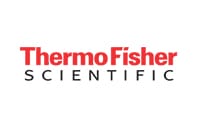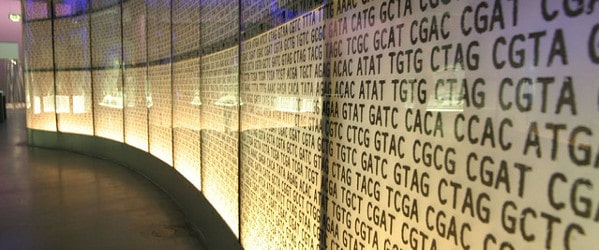Maybe you want to examine the entire transcriptome or maybe you want to investigate changes in expression from your favorite gene. You could do whole transcriptome sequencing or mRNA-seq. But which one is right for your project? From budget considerations to sample collection, let’s briefly look at both to see which might be best for your project.

Choose Your RNA Targets: A Whole Transcriptome or mRNA Sequencing Approach
A whole transcriptome analysis will give you the most comprehensive view possible. It’s the method to sequence all coding and non-coding RNA transcripts. In other words, messenger RNAs that code for proteins and then all of the other microRNAs, small interfering RNAs, extracellular RNAs — and even ribosomal RNA — that do not. But, ribosomal RNA is often depleted before library construction. Whole transcriptome analysis can take you from single base level identification to global expression levels, introns, exons and junctions between them.
Contrast that with mRNA-seq to get straight to the coding RNAs. This is around 2% of the entire transcriptome and is composed of poly-A-tailed RNA. mRNA-seq is often used for identification/comparison of gene expression levels between groups — perfect for drug treatment, behavioral selection and disease related research.
RNA samples are traditionally reverse transcribed into cDNA for downstream chemistry. While this makes your sample more thermostable, there are drawbacks. Scientists often talk of ‘biases’ with respect to the usage of cDNA; one of which is template switching. During reverse transcription, synthesized cDNA can detach from your RNA and then re-bind to another, nearly identical sequence of base pairs somewhere else along the strand. Such a small change has a huge impact on discovery of where introns and exons join.
For a more informative approach, turn to InvitrogenTM CollibriTM Stranded RNA Library Prep Kits for IlluminaTM systems that add helper adaptors directly onto the RNA before cDNA is generated later on in the workflow.
Fresh or Frozen Tissue Versus FFPE Samples
Total RNA can be quickly extracted in your lab for dollars or less per sample with a favorite method or kit. It’s ideal to begin with fresh, new samples that can be processed from start to finish while maintaining as much of an RNase/DNase contamination-free environment as possible, but labs with existing sample sets will use what they have on hand (regardless if it is a newer, older or FFPE — formalin-fixed paraffin embedded — sample set).
FFPE samples present a unique challenge, because their handling and storage history may not be known. With that, RNA extraction may then show higher degradation compared to newly collected samples, along with lower RNA yields extracted. Can these FFPE samples still be used for sequencing? Yes!
Keep in mind that before beginning library preparation, you will want to meet or exceed submission guidelines in quantity (total µg), concentration (µg/µL or ng/µL), and quality. Double check the A260/280 and A260/230 values first to confirm high quality RNA. Purify as needed.
Removing Ribosomal RNA (rRNA)
Ribosomal RNA makes up more than 80% of RNA in every sample. To prepare the sample further for both whole transcriptome or mRNA sequencing, a cleanup step will typically use one of the following methods, depending on the kinds of coding or non-coding RNAs you are after:
- Use oligo(dT): Because we know mRNA is polyadenylated, we can enrich the sample with oligo(dT) oligos to effectively ‘select’ for Poly(A) RNAs and not rRNAs.
- Use hybridization-mediated pulldown approach: rRNAs are hybridized to specific biotinylated probes. Magnetic beads capture probe-rRNA hybrid, then a strong magnet pulls the beads away.
- Use rRNA/DNA hybridization with RNAse H cleavage or other nucleases: Enzymatic action digests rRNA:DNA probe hybrid pairs or enzymatic action digests rRNA directly.
Some rRNA depletion is better than no depletion but note the caveat to this kind of cleanup. You will never be able to eliminate 100% rRNA from your sample (that’s OK — with less rRNA present, any carryover is easier to identify in the results when comparing to the gene expression data).
Major Time Investments
So which method is best for your project? Take into account the steps with the largest time investment: experimentation, sample collection, and data analysis. Sample processing and sequencing turnaround time is usually quick by comparison.
There is no rush to reach the sequencer. With a carefully designed experiment — and plenty of sample sets, which by the way, can be stored in cold storage until ready to proceed — you are quickly on the way to obtaining high quality information from as much of the genome you seek!
For more information, download our free infographic.
For more reading:
- Hou, Zhonggang et al. “A cost-effective RNA sequencing protocol for large-scale gene expression studies” Scientific reports 5 9570. 1 Apr. 2015, doi:10.1038/srep09570
- Hrdlickova, Radmila et al. “RNA-Seq methods for transcriptome analysis” Wiley interdisciplinary reviews. RNA 8,1 (2016): 10.1002/wrna.1364.
- Ozsolak F, Milos PM. RNA sequencing: advances, challenges and opportunities. Nat Rev Genet. 2010;12(2):87-98.








